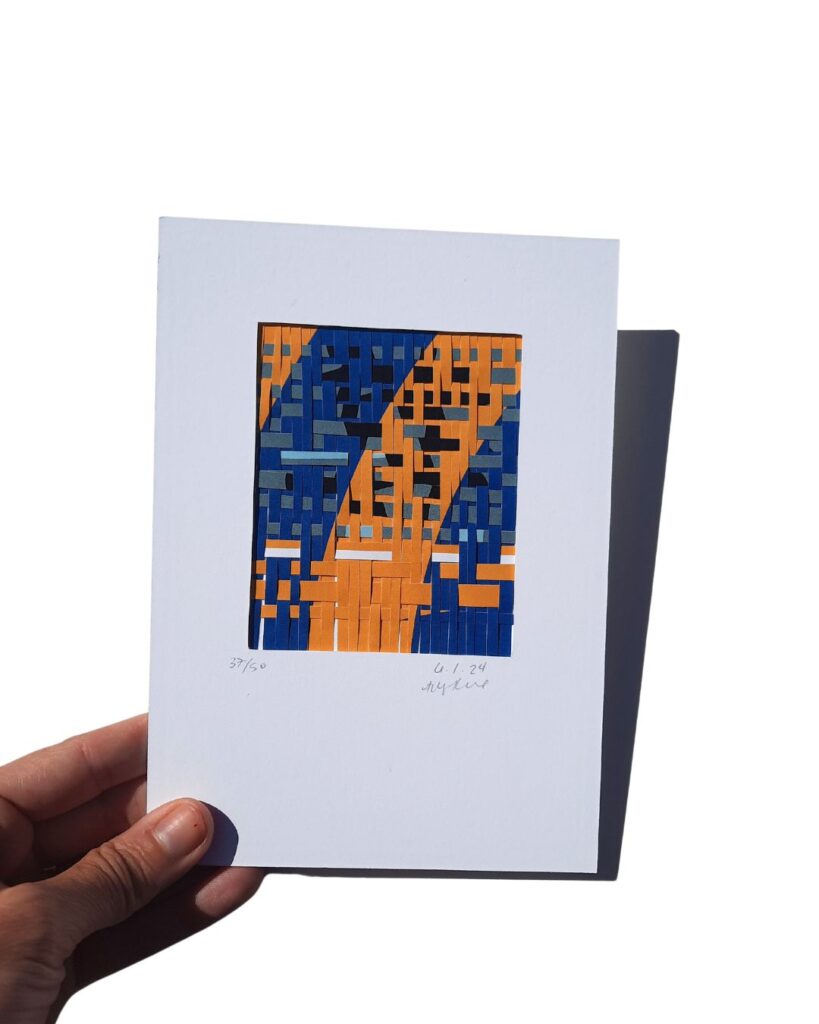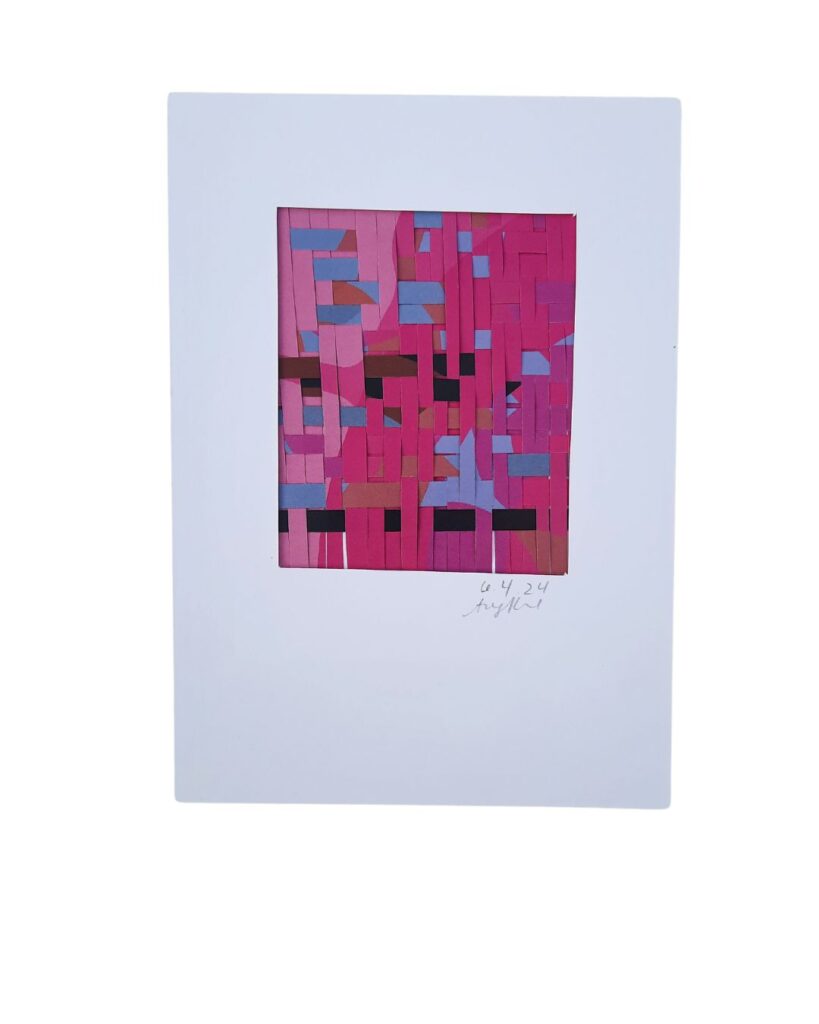Create a Summer Experiment
Summer is the perfect time to start a personal experiment.
In April, I decided to complete 50 mini-weavings. Fifty seemed like an attainable number, yet one that would stretch me. I started strong, creating several weavings in a day, and then hit a point where I didn’t like anything. Feeling stuck, I considered pulling the plug on the experiment.
After taking a few days off, I returned, reminding myself that the purpose of the experiment wasn’t to achieve perfection or to like everything I made. It was to find peace in the repetition and calm in cutting each strip by hand, with the bonus of developing new ideas, liking what I created, and learning.
Throughout the process, I thought a lot about practice and revision, which are essential things I teach my students, but I was also reminded that it isn’t always fun. You get stuck in the messy middle and want to give up. The messy middle is when you’ve done a decent amount of work and made a few things you like, but then your imagination takes off. You have these big ideas that are yet to be fully formed. You need help understanding them, knowing what to do with them, or how to achieve them. They remind you that what you’re doing right now, in this very moment, is not what you want.
The messy middle begs you to stop.
Because the weaving was positioned as a personal experiment with clear boundaries, it helped me push past the messy middle and led me to create many pieces that I LOVED. I loved them so much that I started sharing them with friends. Then, others loved them and asked if they were for sale, so I created another experiment and put them up for sale.
Why so many experiments? Because experiments help to reframe our approach. An experiment means that it’s a success as long as you learn something, no matter the results. It also begs you to make it fun and do something different. Experiments create guiding principles to help keep you moving forward, even when you don’t want to.
Years ago, I sold one-of-a-kind handwoven scarves online. As I worked to set up a shop to sell my new woven pieces, everything that I hated about selling online in the past came flooding back.
- Coming up with names for each piece
- Writing descriptions
- finding the time to take multiple photos of each piece
- constantly checking in to make sure that orders were promptly shipped and packed
I was right back in the messy middle and was close to determining that I wouldn’t sell the work. Instead, I thought about how I could remove all of the things that I didn’t like about the process and bring in everything that I do love about selling.
- I love sharing my work
- I love finding sustainable practices to bring into my art-making
- I love knowing that someone is going to receive a package and get to experience owning a work of art
- I love surprise and ease
- I love observing human behavior and decision-making
All of this informed the project’s second phase- sharing and selling the work to you—the number of its creation in the series of 50 generated titles for each piece. The descriptions are the same, as each piece is the same size and created through the same process and with the same materials. The work is for sale for a limited time, less than 30 days, and the price increases as time passes.
Pricing [ Explore the shop]
$25.00 for the first five days
Then the price doubles
$50 for three days ( half of the proceeds will go to Kitchen World services)
Then the price increases for the final time
$75 and remains until the end of June, when the store closes. ( half of the proceeds will go to Kitchen World Service)
Create your experiment.
Pick a theme/goal: What’s something that you keep telling yourself that you want to do or that you want to get better at? Use that as a guide to create a theme or goal for your experiment.
Keep it tight: Your experiment should be something you can achieve without getting overwhelmed or stressed out. So you want to make the goal clear and within reason. For example, write 1,000 words for the next two weeks. Make pizza every Friday night for the next three months. You could fill a spread in your sketchbook every day until your sketchbook is complete.
The rules for my project were:
- 50 paper weavings
- It must be created with materials that I already have
- Approx 3″x4″ so that I can complete them in one session
- I will hand-cut the strips one at a time
- The pattern for each piece should be different
- Matte each piece
Track your progress: Sharing your project with others and tracking your progress will increase your chances of completing the project. If you don’t want to share with others, create a way to check in and track your progress daily, which could be done in something as simple as a tallied notebook or using a project management tool like Trello.
Reflect and Adjust:
- As you go, remember the overarching goal of your project and make adjustments as needed.
- Remember, you made the rules, so you can change and break them as needed.
- Use what you learn from this project to inform and guide your next one.
If you love paper weaving, be sure to check out The Weaving Book


